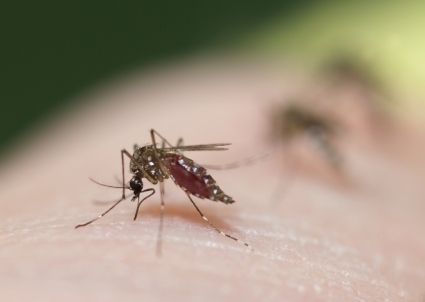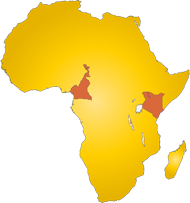
Background
Mosquitoes depict an almost worldwide scourge of humanity. In tropical and subtropical regions, they transmit numerous diseases like Malaria, West Nile Virus and Chikungunya, when females are taking a blood meal which is necessary for their egg production. Most cases of infections and deaths due to mosquito-transmitted diseases are associated with Malaria. In 2008, 243 million cases of Malaria infections were estimated worldwide, causing 863,000 deaths, with 89% in the African Region, and 88% of these among children under the age of five [1]. But also other, often neglected diseases like Yellow Fever and Dengue cause serious numbers of infections, particularly in some of the poorest regions of the world. For instance, 200,000 cases of Yellow Fever are estimated worldwide every year, causing 30,000 deaths, with 90% of them in Africa.
Globalization in conjunction with the climate change lead to a shift of the range of both the vectors and the diseases in areas previously unaffected. From 1999 - 2007, an outbreak of the newly introduced West Nile Virus caused around 23,000 infections, with 1,000 cases of death in the United States [2]. In Europe, global warming is believed to facilitate the establishment of the introduced Asian Tiger Mosquito (Stegomya albopicta), which can readily transmit numerous diseases due to it's diverse blood searching behaviour [3].
But even where mosquitoes are not vectors for dangerous diseases, they can considerably challenge life quality and economic wealth. As a big nuisance, they can affect the development of touristic regions as well as livestock breeding and reduce the surrounding land value [4].
[1] WHO (2009): ![]()
![]() World Malaria Report 2009. Geneva, Switzerland.
World Malaria Report 2009. Geneva, Switzerland.
[2] Centers for Disease Control and Prevention CDC (2012): ![]()
![]() http://www.cdc.gov/ncidod/dvbid/westnile/surv&control_archive.htm
http://www.cdc.gov/ncidod/dvbid/westnile/surv&control_archive.htm
[3] Caminade et al. (2012): ![]()
![]() Suitability of European climate for the Asian tiger mosquito Aedes albopictus: recent trends and future scenarios. J. R. Soc. Interface.
Suitability of European climate for the Asian tiger mosquito Aedes albopictus: recent trends and future scenarios. J. R. Soc. Interface.
[4] Pimentel (2005): ![]()
![]() Aquatic Nuisance Species in the New York State Canal and Hudson River Systems and the Great Lakes Basin: An Economic and Environmental Assessment. Environmental Managment 35 (5), 692-702.
Aquatic Nuisance Species in the New York State Canal and Hudson River Systems and the Great Lakes Basin: An Economic and Environmental Assessment. Environmental Managment 35 (5), 692-702.
[5] Labbé et al. (2007):![]()
![]() Forty years of erratic insecticide resistance evolution in the mosquito Culex pipiens. PLoS Genet 3 (11), 2190-2199.
Forty years of erratic insecticide resistance evolution in the mosquito Culex pipiens. PLoS Genet 3 (11), 2190-2199.



